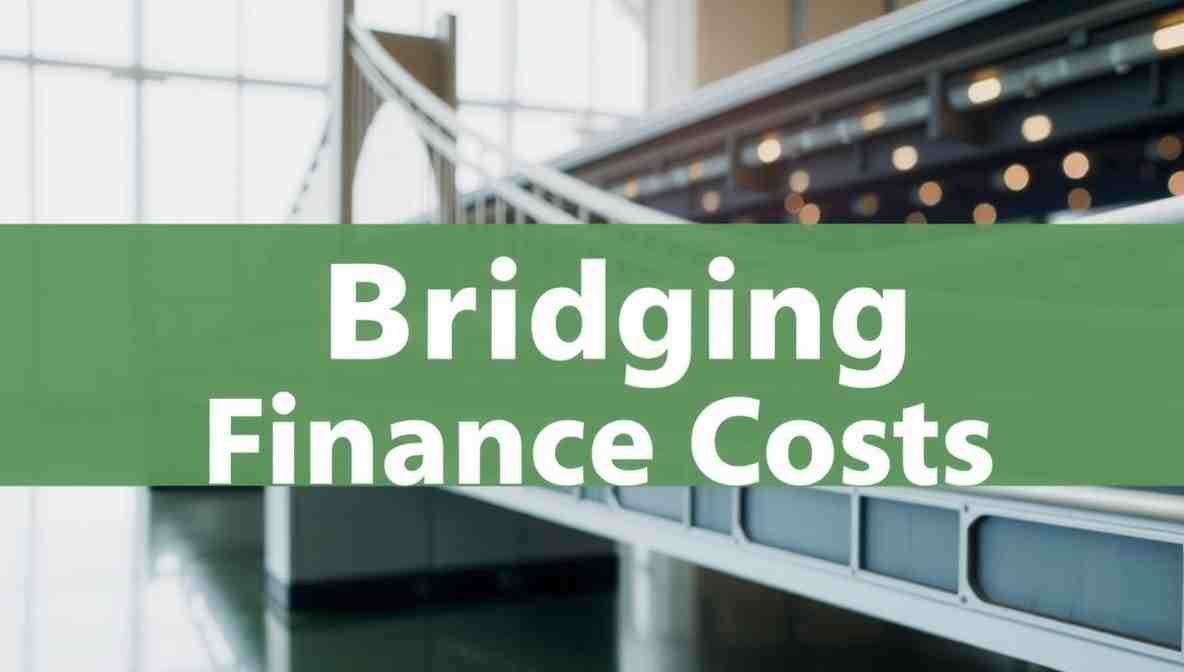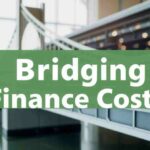When investors need quick access to funding, bridge loans can be a helpful solution. These short-term loans serve as financial instruments to bridge gaps in cash flow, but they often come with higher-than-average interest rates compared to traditional loans. This is because lenders take on more risk, so they charge higher fees to protect their investment. If you’re considering a bridge loan, it’s important to analyze how these rates can impact your financial goals and determine whether they are wise options for your situation.
To make an informed decision, it’s essential to stay updated on the current market trends and how bridge loan rates have evolved over time. When you explore different lending options today, you might find variations in rates based on factors like loan duration, credit score, and collateral. Understanding these elements can help you secure the best possible deal and avoid unnecessary financial strain.
What do bridging loans cost?
When you need finance to secure a deal quickly, a bridging loan can be a valuable option. Whether you’re looking to purchase a residential or commercial property, invest in a buy to let or HMO, or need funds for renovations and development work, traditional mortgage finance may not always work within tight deadlines. The process can be difficult, making a bridging loan an appropriate solution for many investors. This type of short-term finance offers flexibility for buyers who need to act fast, especially when dealing with properties or land that lenders consider unmortgageable under standard mortgage contracts.
Like any financial product, bridging loans come with costs, and they tend to be expensive compared to long-term financing options. However, selecting a lender based on cost alone isn’t always the right tool for every situation. Instead, it’s important to understand the full picture when considering a bridging loan, especially in real estate investing. These loans are designed to bridge the gap for those seeking permanent stability or transitioning to longer-term loans.
To qualify, borrowers typically need a strong financial profile and a solid exit plan that assures the lender they can meet consistent monthly interest payments. The terms of bridging loans usually range from 12-36 months, and in many cases, borrowers can repay the loan early without a prepayment penalty.
For instance, an international investor looking to acquire a luxury property in South Florida might face delays in their long-term loan due to an underwriting process. With multiple offers on the market, waiting isn’t an option. A bridge loan from Vaster allows them to act fast, finalized their purchase, and then use permanent financing to repay the loan once approved.
A short-term finance option like this provides the necessary liquidity to capitalize on prime opportunities, especially in competitive markets. It ensures investors don’t miss out on high-value assets, making it a strategic tool in fast-moving real estate deals. Those who rely solely on traditional financing timelines often struggle to compete, which is why bridging loans remain a vital resource for quick transactions.
Uses for Bridge Loans:
Bridge loans provide real estate investors with flexible, short-term financing that can be a game-changer in the right situations. When a prime investment property is about to be taken off the market soon, acting fast is crucial. With traditional loans taking time to process, bridge loans allow investors to act quickly and secure the deal before it’s gone. Whether it’s a multifamily building or a commercial asset, this type of financing can help investors seizing investment opportunities without delay.
Another key use of bridge loans is refinancing existing investment properties. Investors looking to free up liquidity for additional investments or to enhance cash flow can use these loans as a strategic financing tool. If an investor needs to pay off a higher-priced loan but is waiting for better interest rates, a bridge loan can serve as a timely solution.
For those seeking funding for acquisitions, property improvements, or even transitioning between loans, bridge loans help bridge the gap until more permanent financing is secured. This is especially useful in an evolving market, where financial needs can change quickly.
As interest rates shift, the demand for refinancing is expected to rise. Many investors who took out loans in recent years at high rates may now be looking for an exit strategy. Bridge loans offer a way to move from expensive debt to more manageable financing when the right opportunity arises.
Overall, bridge loans are an effective solution for investors needing fast access to funds. Whether it’s grabbing a prime opportunity, refinancing, or covering financial gaps, these loans can provide the flexibility needed to navigate today’s competitive market.
Bridging loan fees:
When taking out bridging loans, it’s important to understand the types of costs involved. These costs can either be upfront, deducted, or added to the loan, depending on the agreement with the lender. One of the first charges you’ll encounter is the arrangement fee, which is the cost of the lender providing finance. This is typically between 1.5% and 2% of the loan amount.
Another major cost is interest, which can be 0.5% per month, 1% per month, or even 2% per month, depending on the circumstances and the project. The way of paying interest also varies—it can be serviced monthly, deducted from the loan, or added to the overall borrowing amount.
Borrowers may also have to pay an application or administration fee, which covers additional fees associated with applying for the loan. On top of this, a valuation fee is often required to assess the property or land involved. A surveyor may conduct a desktop survey for simpler cases, while a physical survey is necessary for complex projects. This cost can range from £500 to thousands of pounds, and sometimes, specialist surveys may be needed.
Legal costs are another factor to consider. Solicitor’s fees cover the legal work required to protect both the borrower and the lender. These include local searches, transfer of ownership, and in some cases, a search indemnity fee to speed up the process. It’s common to pay for two sets of legal costs—one for yourself and one for the lender. However, some lenders offer dual representation, meaning only one set of legal fees is due at completion.
At the end of the bridging loan term, some lenders charge exit fees. While they may offer a lower monthly interest rate, an exit fee of around 1% of the loan balance may be added when the loan is repaid.
Other potential costs include a broker fee, which professional advisers, such as Simple Fast Mortgage, charge for advice. This can be around £698. Additionally, if the loan is released in stages for development or refurbishment, a drawdown fee applies. A typical fee for this service is £250 per drawdown.
For larger projects, a quantity surveyor or monitoring fee may be necessary to ensure the project remains viable throughout the term of the loan. These fees vary depending on the complexity of the work.
Other costs to consider include title insurance, which ranges between 0.5% and 1% of the property purchase price. The location, insurance provider, and loan amount will determine the exact cost. A transfer fee of around £35 may also be charged to cover the cost of transferring loan money to the solicitor.
Finally, stamp duty is another expense to be aware of when purchasing a property. Since this is a tax, borrowers should check the UK government website to determine the amount to pay.
What factors affect the interest rates for bridging loans?
When applying for bridging loans, the interest rate you receive will depend on several factors. One of the most important is the purpose of the loan. Are you buying a property for personal use, investment, or business? Loans for residential properties usually come with lower interest rates than those for commercial units or land purchases. If you plan on developing land or carrying out a major refurbishment, expect higher costs, as projects needing little to no work generally come with better rates.
Another key factor is the loan to value (LTV) ratio. This refers to how much you are borrowing compared to the value of the property. If you borrow a smaller percentage of the property’s worth, you may receive a lower interest rate. However, for high-value properties, especially those over £500k, the interest rate might be higher. Lenders assess the risk, and the more equity you have in the loan, the better your chances of securing a favorable deal.
Your credit history also plays a crucial role. If you have a good record of repaying loans, lenders are more likely to offer you a lower interest rate. However, if you have had issues in the past, such as late payments or defaults, you may have to pay a higher rate. The loan term is another important factor—shorter loans typically come with lower interest rates, while longer repayment periods may cost more.
Another major factor is the funding line of the lender. Where they get their money from affects the rates they offer. Some lenders rely on private investors, while others are influenced by money markets. Additionally, bridging loan interest rates can be affected by external factors like SWAP rates and the Bank of England base rate, which fluctuate over time.
Understanding these factors can help you secure the best bridging loan deal. Lenders assess risk, property value, loan size, and borrower history before deciding on an interest rate. If you are well-prepared and choose the right loan for your needs, you can find a cost-effective solution that works for your financial situation.
How is interest on a bridging loan repaid?
When taking out a bridging loan, it’s important to understand how the interest is repaid. Lenders offer different options, and the best choice depends on your situation and financial plans. Choosing the right method can help you manage costs effectively and keep the loan affordable.
One method is Serviced interest, where you make monthly payments, similar to an interest-only mortgage. This means you only pay the interest due each month, leaving the loan amount untouched. While this allows for the maximum loan to be available, an affordability assessment is required to ensure that the borrower can meet the payments. In some cases, the loan can be part-serviced, meaning only a portion of the interest is paid monthly.
Another option is Rolled Up interest, where the interest is added to the loan instead of being paid monthly. Borrowers then repay the original amount borrowed, plus the accumulated interest, at the end of the loan term. This method can result in a lower loan at the beginning since the interest is included in the final repayment.
A third method is Retained interest. In this case, the lender calculates the total interest for the duration of the loan and deducts it from the advance requested. This means the borrower receives a smaller upfront loan but does not need to make interest payments during the term. This arrangement is commonly chosen when a borrower wants to keep payments low during the loan period.
The mortgage team will assess your needs and recommend the best solution based on your financial position. The decision on repayment depends on what the lender is offering and your future plans. Choosing the right method ensures a viable financial strategy for managing bridging loans effectively.
What Were Bridge Loan Rates in the Past?
Bridge Loan Rates have changed significantly over time, shaped by economic conditions and shifts in financial markets. Not long ago, these loans had much lower interest rates, especially before the recent inflation cycle and economic downturns. Historically, lenders relied on LIBOR (London Interbank Offered Rate) as a key benchmark to determine pricing for short-term loans. However, with global financial shifts, the industry transitioned to SOFR (Secured Overnight Financing Rate), a more stable and reliable reference rate for lending.
Today, bridge loan rates are largely influenced by Federal Reserve policies, particularly rate hikes aimed at controlling inflation. These changes have increased borrowing costs, making financing more expensive for both borrowers and lenders. The rising cost of capital costs has forced financial institutions and private lenders to adjust their pricing, leading to greater market fluctuations in the lending space. The impact is especially noticeable in states like Florida and New York, where high-value real estate assets drive demand for short-term funding.
One of the biggest challenges for qualified borrowers today is navigating the risk associated with interest rate changes. Since SOFR is based on overnight transactions, it reacts quickly to economic conditions, creating uncertainty in the market participants seeking short-term debt solutions. For investors, developers, and homeowners looking for bridge loans, understanding how interest rate adjustments affect repayment is crucial. A well-planned exit strategy can help manage exposure and avoid excessive repayment costs.
The shift from LIBOR to SOFR has also changed how lending products are structured. Many institutional lenders and banks have taken a more conservative approach, focusing on lower-risk deals with strong financial profiles. On the other hand, private lenders are offering creative financing options, particularly for those with a proven track record in the property market. Investors looking for opportunities in South Florida and other competitive markets may find higher returns but also face greater risks due to market demand and regulatory changes.
Additionally, some lenders use strategies like cross-collateralization and blanket loans to reduce their risk mitigation exposure while offering more flexible terms. Borrowers who present a strong financial profile and demonstrate the ability to service debt are more likely to secure favorable rates. Some investors also negotiate prepayment options to avoid long-term financial strain.
As the market evolves, many expect rate compression, leading to more competitive pricing. Vaster, for example, uses the 1M SOFR benchmark to price its loans, ensuring that borrowers remain in sync with macro trends and local trends. While the overall term structure of bridge loans remains short, the increasing reliance on asset-backed lending is expected to stabilize valuations.
In the coming months, we could see further changes based on monetary policy and broader economic conditions. If rate cuts occur, as some analysts predict, it may lead to lower borrowing costs and increased flexibility for investors looking to capitalize on shifting market conditions. Those in luxury properties and high-demand real estate sectors should stay informed about market shifts and lender expectations.
For now, bridge loan rates remain relatively high, but strategic planning, lender relationships, and an understanding of the current lending space can help borrowers secure the best terms possible.
FAQ’s:
When Are Bridging Loan Fees Paid?
Some fees must be paid upfront, such as the valuation fee, while others are added to the loan and repaid at the end of the term. Lenders may also charge lender fees, which can be deducted from the total amount before disbursement. The exact structure depends on the lenders and the agreement terms. Always check how fees are handled before committing.
How Fast Can a Bridging Loan Be Arranged?
Bridging loans are designed to be quick and flexible. In most cases, you can arrange one within 2-4 weeks, but if time is pressing, it may be secured in just a few days. Some lenders make it possible to complete the process much quicker, depending on the circumstances.
How Much Deposit Is Needed for a Bridging Loan?
A bridging loan usually requires a minimum deposit of 25%, but this can vary based on the lender and the specific circumstances of the loan. Some lenders may ask for a higher deposit, depending on the risk involved. If the loan amount is large, the deposit might be adjusted to match the lender’s requirements. Always check with the lender to understand their exact terms.
Conclusion:
The market constantly adapts to changing lending conditions, making it essential to work with a lender who understands your financial needs. Companies like Vaster provide tailored private loan solutions that align with your goals and help you build a strong exit strategy.
With competitive bridge loan rates in today’s real estate market, finding the right financing is easier than ever. If you’re exploring options, you can reach out for a no-obligation quick quote to see what works best for you.





